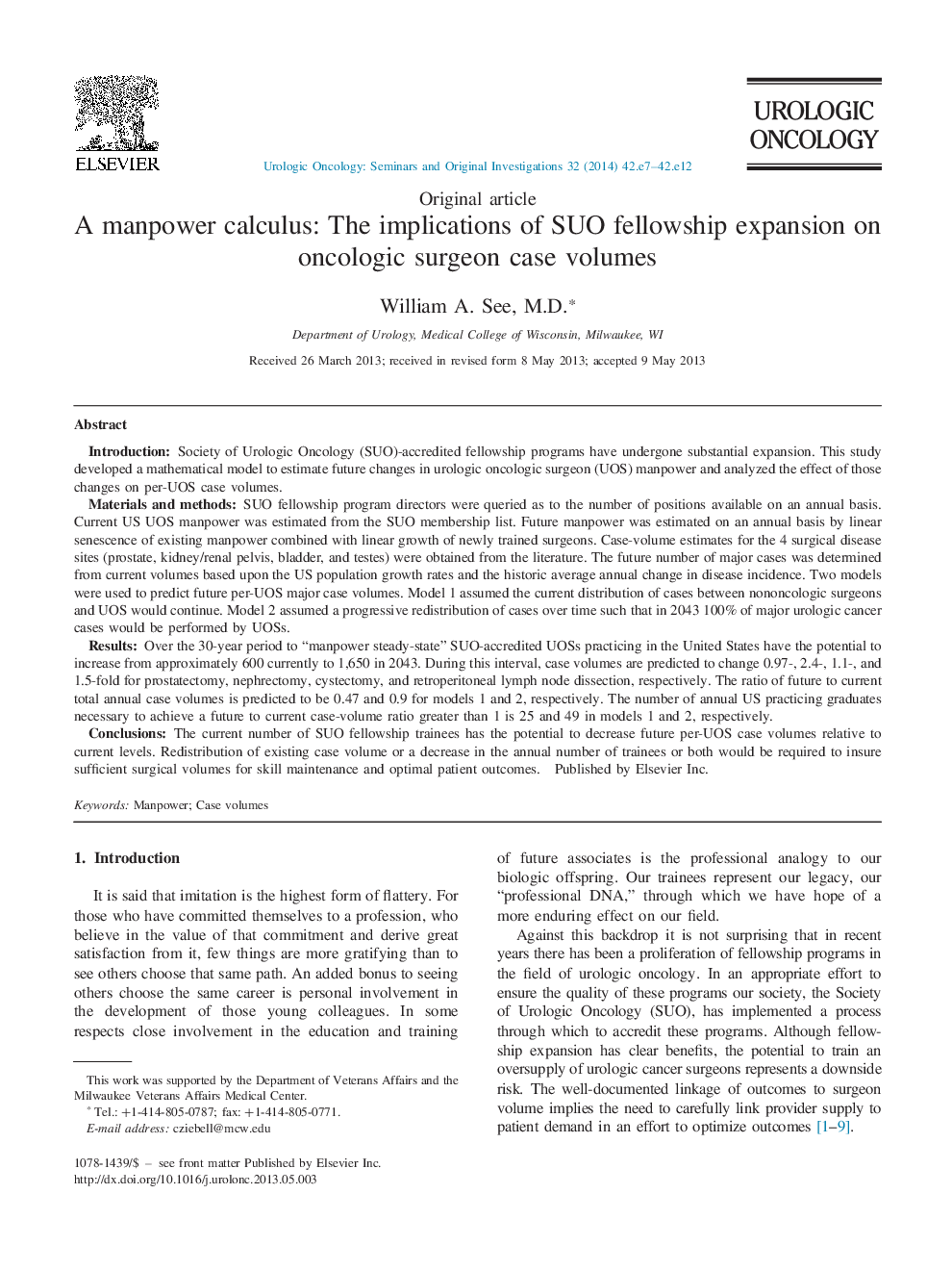| کد مقاله | کد نشریه | سال انتشار | مقاله انگلیسی | نسخه تمام متن |
|---|---|---|---|---|
| 6194497 | 1259362 | 2014 | 6 صفحه PDF | دانلود رایگان |

IntroductionSociety of Urologic Oncology (SUO)-accredited fellowship programs have undergone substantial expansion. This study developed a mathematical model to estimate future changes in urologic oncologic surgeon (UOS) manpower and analyzed the effect of those changes on per-UOS case volumes.Materials and methodsSUO fellowship program directors were queried as to the number of positions available on an annual basis. Current US UOS manpower was estimated from the SUO membership list. Future manpower was estimated on an annual basis by linear senescence of existing manpower combined with linear growth of newly trained surgeons. Case-volume estimates for the 4 surgical disease sites (prostate, kidney/renal pelvis, bladder, and testes) were obtained from the literature. The future number of major cases was determined from current volumes based upon the US population growth rates and the historic average annual change in disease incidence. Two models were used to predict future per-UOS major case volumes. Model 1 assumed the current distribution of cases between nononcologic surgeons and UOS would continue. Model 2 assumed a progressive redistribution of cases over time such that in 2043 100% of major urologic cancer cases would be performed by UOSs.ResultsOver the 30-year period to “manpower steady-state” SUO-accredited UOSs practicing in the United States have the potential to increase from approximately 600 currently to 1,650 in 2043. During this interval, case volumes are predicted to change 0.97-, 2.4-, 1.1-, and 1.5-fold for prostatectomy, nephrectomy, cystectomy, and retroperitoneal lymph node dissection, respectively. The ratio of future to current total annual case volumes is predicted to be 0.47 and 0.9 for models 1 and 2, respectively. The number of annual US practicing graduates necessary to achieve a future to current case-volume ratio greater than 1 is 25 and 49 in models 1 and 2, respectively.ConclusionsThe current number of SUO fellowship trainees has the potential to decrease future per-UOS case volumes relative to current levels. Redistribution of existing case volume or a decrease in the annual number of trainees or both would be required to insure sufficient surgical volumes for skill maintenance and optimal patient outcomes.
Journal: Urologic Oncology: Seminars and Original Investigations - Volume 32, Issue 1, January 2014, Pages 42.e7-42.e12